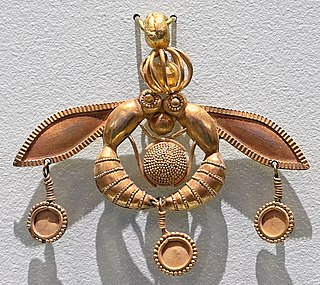
Johann Friedrich Gmelin was a German naturalist, chemist, botanist, entomologist, herpetologist, and malacologist.

Johann Christian Polycarp Erxleben was a German naturalist from Quedlinburg.

Gottlieb Conrad Christian Storr was a German physician, chemist, and naturalist.

Eugenius Johann Christoph Esper was a German zoologist and naturalist. Born in Wunsiedel in Bavaria, he was professor of zoology at Erlangen university.
Christian Rudolph Wilhelm Wiedemann was a German physician, historian, naturalist and entomologist. He is best known for his studies of world Diptera, but he also studied Hymenoptera and Coleoptera, although far less expertly.

Entomology, the scientific study of insects and closely related terrestrial arthropods, has been impelled by the necessity of societies to protect themselves from insect-borne diseases, crop losses to pest insects, and insect-related discomfort, as well as by people's natural curiosity. Though many significant developments in the field happened only recently, in the 19th–20th centuries, the history of entomology stretches back to prehistory.

Christoph Gottlieb von Murr was a polymathic German scholar, based in Nuremberg. He was a historian and magistrate. He edited and contributed to significant cultural and scientific journals. A notable naturalist von Murr was a Member of the Gesellschaft Naturforschender Freunde zu Berlin and the Bayerische Akademie der Wissenschaften. He was also an art historian ,the author of the first bibliography of books on painting, sculpture, and engraving. He published extensively on illuminated manuscripts, early printed books, the history of libraries, the history of the Jesuit missions, the history of the Jews in China, Arabic and Chinese literature. Familiar with most of the European languages, he was an active correspondent with many of the most distinguished scholars of the period. He had a vast library.
Johann Siegfried Hufnagel was a German parson and entomologist (lepidopterist).

August Johann Georg Karl Batsch was a German naturalist. He was a recognised authority on mushrooms, and also described new species of ferns, bryophytes, and seed plants.

Johann Samuel Schröter was a German Protestant pastor since 1763, who was also a conchologist, mineralogist and palaeontologist. He was a member of the Academy of Sciences Leopoldina.

Johann Carl Gehler was a German physician, mineralogist, and anatomist.
The 13 Cuirassier regiments of Old Prussia were formed in the mid-17th to mid-18th centuries, and formed the basis of Frederick the Great's vaunted cavalry.
TheodosiusGottlieb von Scheven was a pastor and German entomologist who specialised in Lepidoptera and Hymenoptera.

Johann Stephan Capieux was a German illustrator of Huguenot origin. He received his artistic training at the Leipzig Art Academy under Adam Friedrich Oeser. Capieux provided illustrations for
Philipp Christoph Kayser was a German pianist, composer, orchestra musician, music teacher and poet. He was a close friend of Johann Wolfgang von Goethe.










